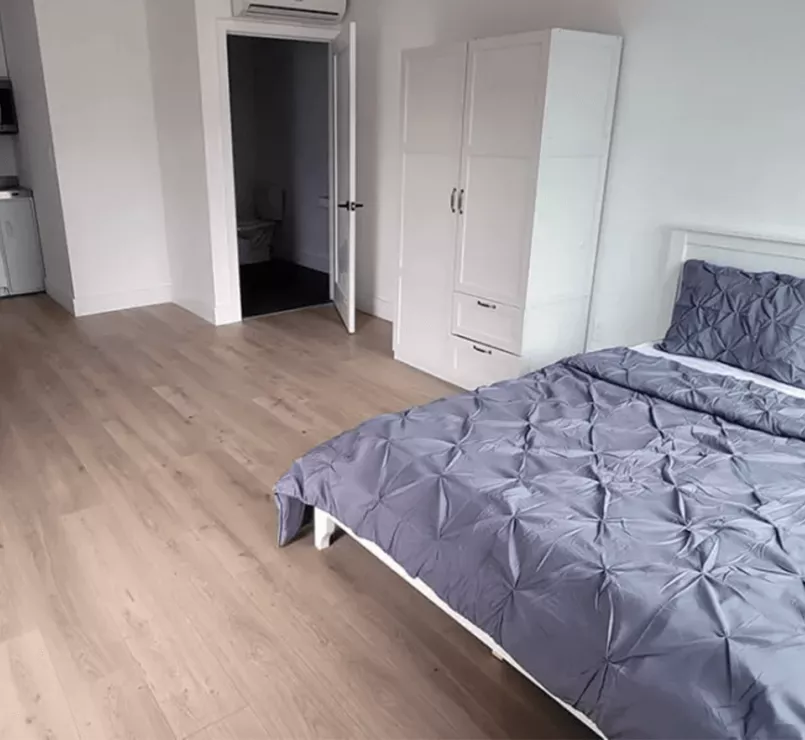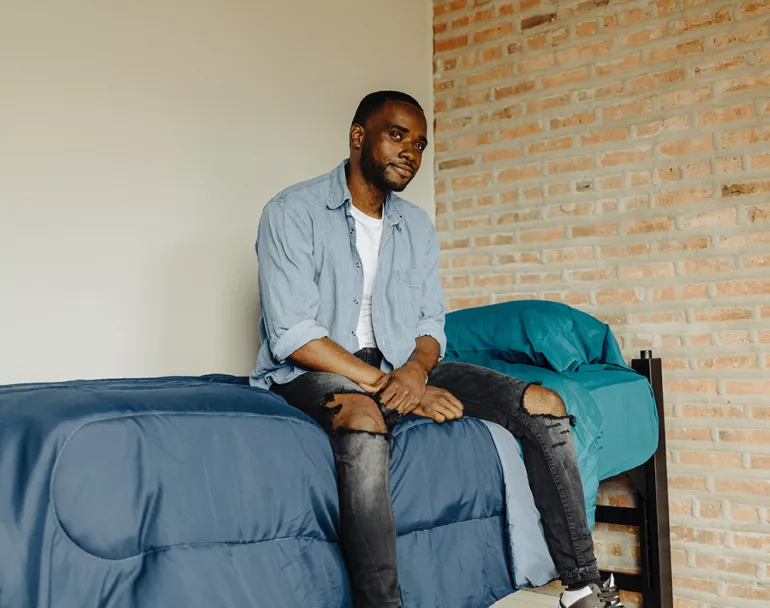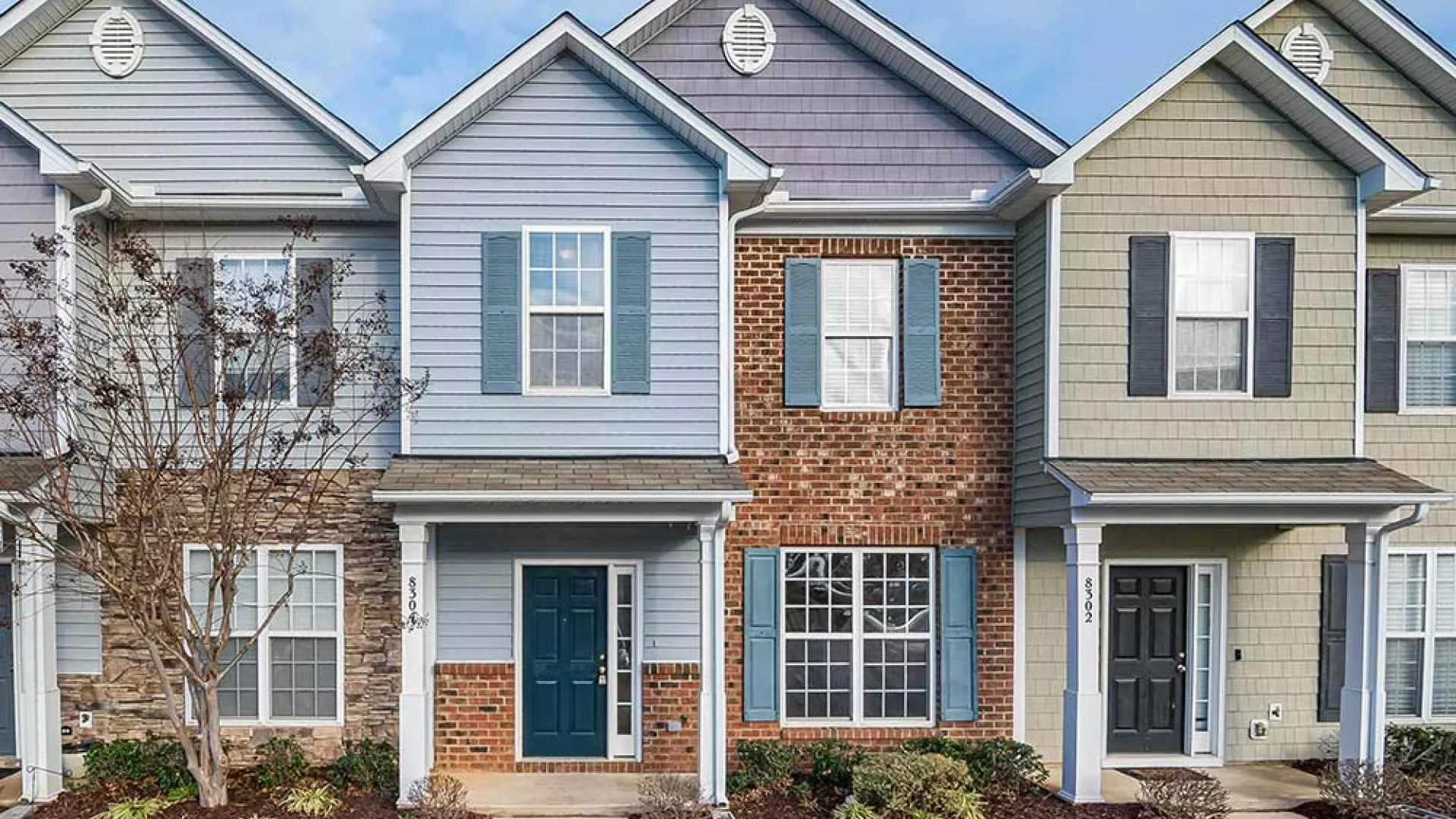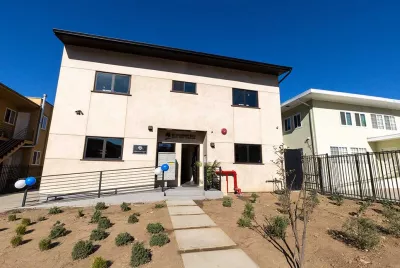Affordable-for-Youth Housing
Housing that is accessible and affordable for young renters. Every youth deserves a stable place to live, and affordable-for-youth housing is the first step — not the last resort.

Giving Context to the Affordable-for-Youth Housing Crisis
The Problem
Each year, more than 4.2 million young people experience homelessness in the U.S. They’re couch surfing, sleeping in shelters, or navigating life on the streets. Some were pushed out by family rejection. Others aged out of foster care with nowhere to go.
And when they look for housing? The market has nothing for them. Rent for “affordable” apartments is out of reach, and even then, waitlists are years long. Most support programs are short-term or not built with youth in mind.
How We Are Rising to the Challenge
If we’re serious about ending youth homelessness, we need to rethink what affordable means — and who it’s built for. Covenant House is reconceiving what “affordable” means for young people seeking to exit homelessness.
What is Affordable-for-Youth Housing?
Affordable-for-youth housing refers to housing that is:
- Specifically affordable for young people with extremely low incomes
- Accessible to youth earning starter salaries or working minimum-wage jobs
- Serves as a foundation that ensures a lifetime of stability for youth aging out of systems of care or trying to stabilize after trauma

Why Affordable-for-Youth Housing Matters
The accepted rule in our society is that housing should consume no more than 30% of someone's income. But when that income is minimum wage, that's where deeply affordable options must come in. Right now, there aren't nearly enough of them.
Other housing programs have strict requirements or only offer short-term solutions. For example,
-
Permanent Housing (or permanent supportive housing): households with at least one disabled member may receive financial housing assistance and supportive services to ensure housing stability. (As defined by HUD).
-
Rapid Rehousing provides short- and medium-term housing and assistance, typically limited to two to three years.
The Covenant House affordable-for-youth housing model fills the gap for youth who have exhausted all financial aid options and are still in need of stable housing. Affordable-for-youth Housing is a model that offers the kind of grace a parent provides for their own children when they hit a stumbling block. Today, the median age when kids move out of their parents’ house is mid-20s, often around 26 or older. The trend is upward due to rising housing costs, student debt, and delayed marriage.
Homeless youth may be considerably younger than that but are expected to be fully “adulting” often by the age of 18. Commercial landlords, even if their rent is considered affordable, cannot offer the kind of grace a parent will when, say, the youth loses their job. Covenant House’s affordable-for-youth housing model does.

Placeholder Text

Everything the donors help provide for us– the jobs created, clothes on our backs, food in our mouths, and now these apartments — if I could talk to supporters personally, I’d say ‘you're not wasting your time, money, nothing. Because Covenant House plans to help every single one of us out. They give everybody a chance.
Derrick Cooney, Linden CommonsWhat We're Building
Covenant House is designing grace into its property management model such that when a young person loses a job, or has to divert income to fix a flat tire, or has an accident and cannot make rent, they’re offered time and support to get back on track. That includes:
-
Helping with a job search
-
Temporary financial aid
-
Sometimes it means offering rent forgiveness for a month or two while the youth regains stability.
These types of tactics can keep a young adult from feeling like they’re failing or from re-entering the homelessness cycle and disrupting personal growth or education.
In the end, these intentional strategies ensure youth gain long-term stability and readiness for truly independent living by their mid- to late-20’s. Significantly, it keeps them from entering the costly and difficult phenomenon of adult homelessness.

Does Affordable-for-Youth Housing Work?
Covenant House has already built and operates affordable-for-youth housing, and it really works! Our two primary locations are called Linden Commons and Olive Tree Commons. Both are community-driven apartment buildings that house both former Covenant House residents and other youth looking for an affordable place to live. Find out more about each location here:
Where Do We Go From Here?
With these first two models of affordable-for-youth housing, Covenant House is leading the way. Our road map starts small and grows with data:
-
Pilot programs in high-need cities.
-
Track what works and what doesn’t: e.g. housing retention, school and job outcomes.
-
Scale up successful models.
Over the next 10 years, Covenant House will purchase and renovate small to medium sized buildings and develop 1,000 units of affordable-for-youth housing models in at least six cities in the U.S. and Canada.
Over the next five years, we aim to develop and assess enough affordable-for-youth housing models to help inform every city’s strategy to end youth homelessness.
How Do We Fund It?
Covenant House is working with individuals who seriously want to invest in social impact. Affordable-for-youth housing is one way donors can create a lasting and meaningful legacy and ensure young people’s experience with homelessness is rare, brief, and nonrecurring. A meaningful donation in support of Covenant House’s purchase and renovation of a small-to-medium-size-building would allow another group of residents the opportunity to move on from homelessness and open the door to countless others to do the same. This really resonates with supporters who are interested in preventing chronic adult homelessness.
Private funding offers the advantage of speed and efficiency; however, Covenant House will leverage public funds wherever possible to help lower the overall cost.
Moreover, smaller-scale projects offer critical benefits that large developments often can’t replicate. Youth thrive in environments where community is personal, where staff know their names and stories, and where trust can be built over time. Smaller housing communities reduce feelings of institutionalization. They also allow services to be more tailored, responsive, and trauma-informed — meeting youth where they are, not where policy dictates they should be. For youth who have faced rejection and instability, this kind of environment isn’t just beneficial — it’s essential.
Help Young People Facing the Housing Shortage
Be part of something transformative. We are calling on visionary leaders, partners and supporters like you to help us approve, construct, and operate more affordable-for-youth housing across the country.


